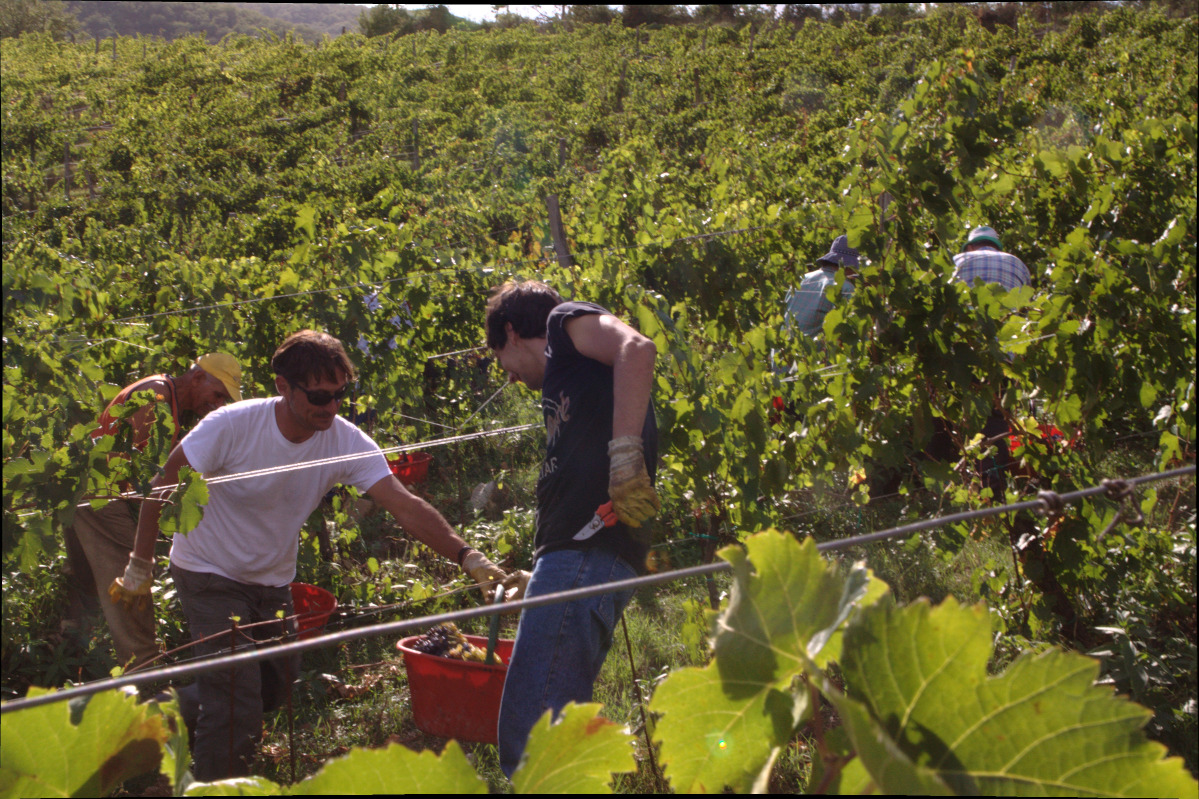
03 Nov How was the 2018 Harvest?
How was the 2018 Harvest?
The most important time of the year is now here as we write this article. The moment in which we collect the fruit of our work and we begin to transform it into nectar that will be bottled and ready in a few years for you.
Climate situation
In the previous issue we kept you informed of the climatic trend. However, if we look at the last two years we realize just how difficult it is to make predictions in the agricultural sector.
The 2017 vintage was characterized by a torrid and dry summer, which forced us to keep the leaves on the foliage as long as possible in order to provide shade for the bunches and thus avoid excessive ripening and scalding of the grapes. Conversely, the 2018 vintage was characterized by a cooler and rainier spring, with thunderstorms typical of the summer months.
This different climatic trend has led to a completely different type of work in the vineyard compared to last year.
Work in the vineyard
This year, in order to ensure the high quality of the crop, we went back to carrying out:
– trimming, or rather cutting the shoots that were too long;
– leaf-stripping, or rather eliminating a part of the leaves to keep the best bunches aired, thus avoiding molds and diseases;
– thinning, i.e. eliminating a part of the hanging clusters.
All this work entails a considerable economic effort, since these activities need to be carried out completely by hand, and it has a substantial influence on the production cost of the grapes; needless to say these practices are mainly dedicated to productions with high quality standards.
September
The harvest of white grapes, which traditionally are the first to mature, began on September 14, while on September 23 we started harvesting the red grape varieties. So we’re basically back to a more traditional calendar, that is a couple of weeks later than the 2017 harvest.
This year, in addition to good quality, the quantity of grapes was also higher than in 2017, when – it’s worth remembering – we lost over 50% of production.
But what sort of wine will our Chianti Classico 2018 be? It will no doubt be a wine that reflects the Radda in Chianti terroir, with an elegant structure and high acidity which is typical of our lands. In addition, the thermal excursion between day and night – which took place, above all, during the two weeks between the end of August and beginning of September – has decidedly contributed to giving more aromas and fragrance to the wines.
Now all we have to do is wait…

November 2018 – Harvest – by Jaro for Monterinaldi®


No Comments